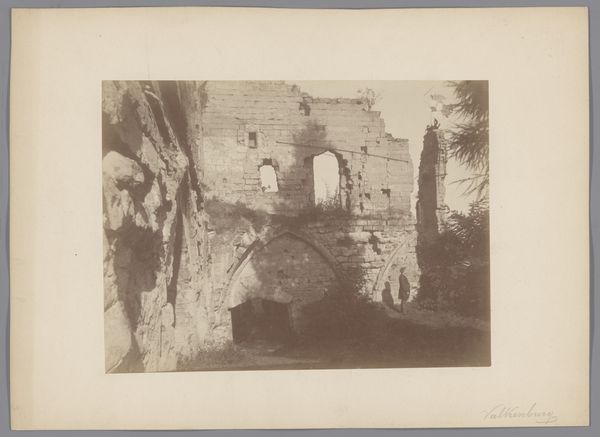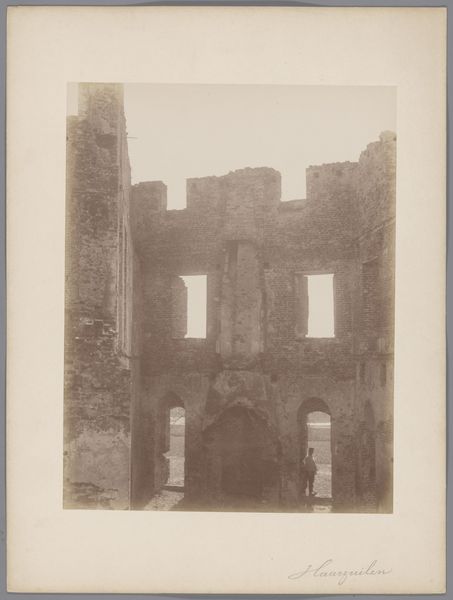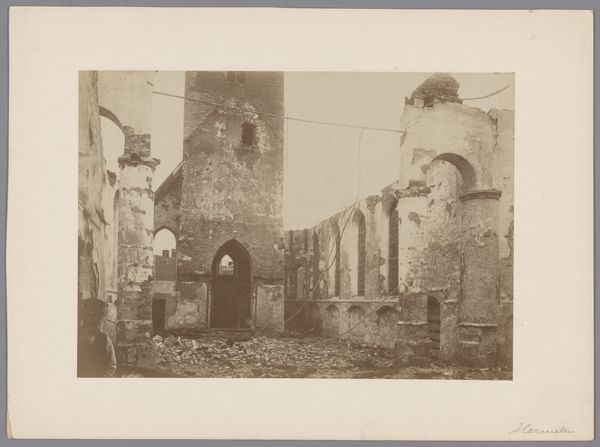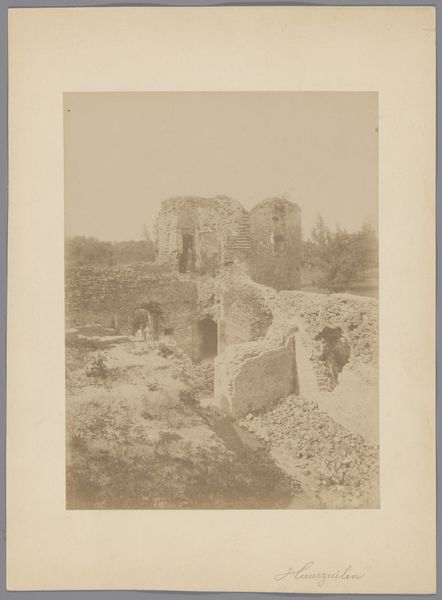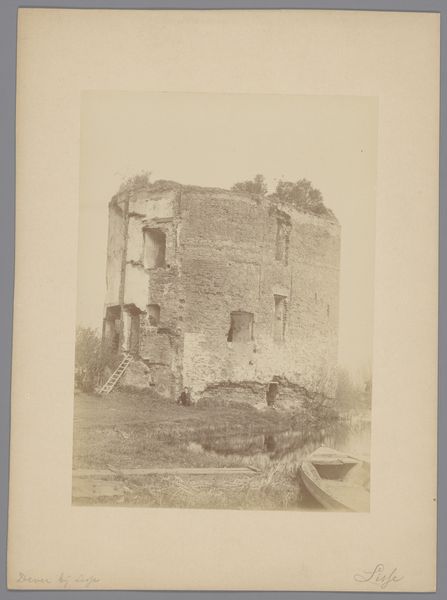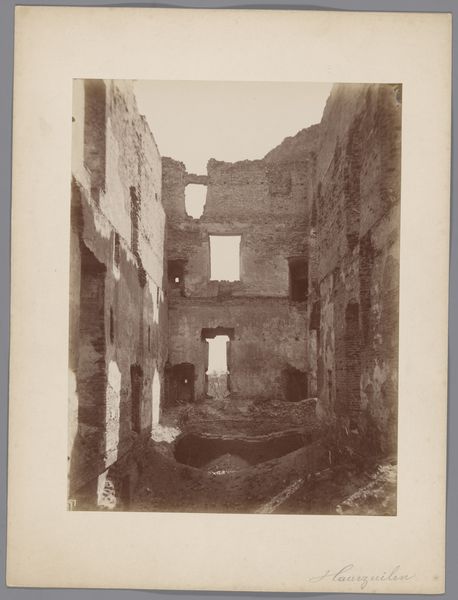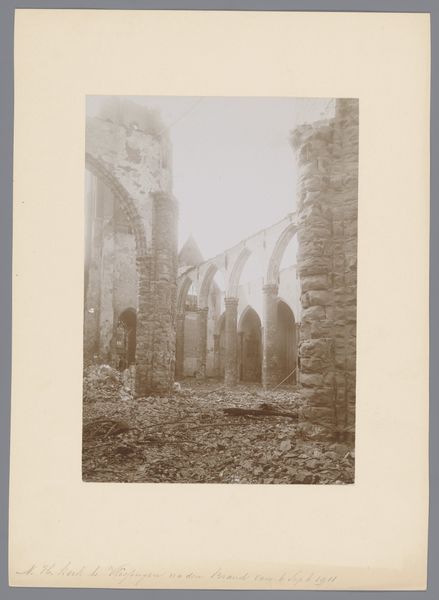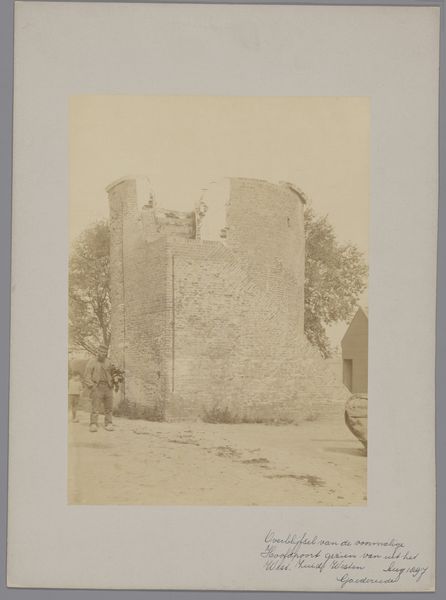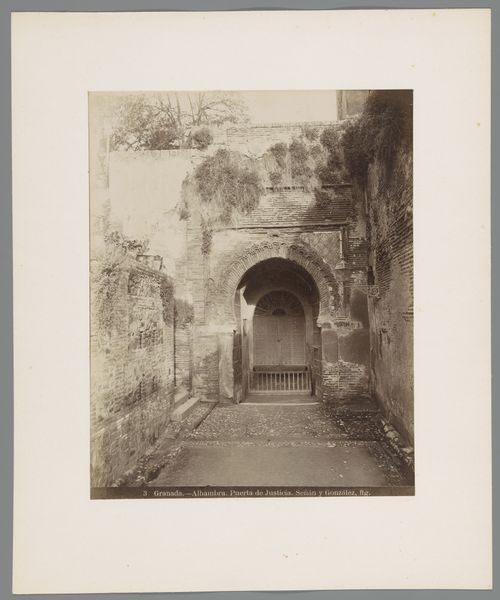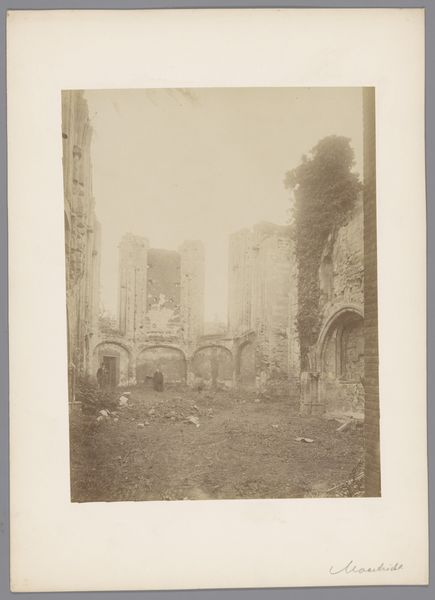
Dimensions: height 232 mm, width 171 mm
Copyright: Rijks Museum: Open Domain
This photograph captures the chapel ruins of Valkenburg Castle, its stones weathered by time. The archway, a potent symbol, immediately draws the eye. In antiquity, arches signified triumph and transition, gateways to new realms or victories, like Roman triumphal arches. The arch appears throughout history, from ancient aqueducts symbolizing Roman engineering to Gothic cathedrals reaching towards the heavens. Consider the arch in early Christian art, often framing depictions of Christ, symbolizing his passage from death to resurrection. Here, however, the arch is broken, the stone decayed. This ruin embodies Vanitas, a reminder of life's impermanence. We can link this ruin to the psychoanalytic concept of the "unheimlich," the uncanny, where something familiar becomes disturbingly unfamiliar, evoking feelings of unease and mortality. The ruin is not just a physical space, but a psychological one, resonating with our own fleeting existence. Observe how the arch is a motif throughout history, constantly resurrected, adapted, and imbued with new meaning, ever present in our collective cultural memory.
Comments
No comments
Be the first to comment and join the conversation on the ultimate creative platform.
